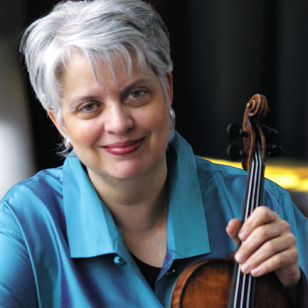New World’s final chamber concert at Lincoln Theatre offers a varied feast

The New World Symphony’s final Lincoln Theatre chamber concert took place Sunday, giving a strong finish to a series that had helped the young musicians to step outside their orchestral comfort zone.
These concerts, which will resume at the Miami Beach orchestra’s new campus next door, have shown marked improvement over last season’s uneven outings, and that continued Sunday in a concert that had everything: a staple of the chamber repertoire, an obscure work by a major composer, some dances by Mozart and a work by a well-known contemporary composer who was involved in preparing the performance.
The concert opened with The Origin of the Harp, an early work by the renowned young British composer Thomas Adès, written for the unusual combination of clarinets, violas, cellos and percussion (and no harp). Adès coached them on the work over Internet2 from London, and taped a brief video presentation that was displayed on a screen before the performance.
The 1994 piece was inspired by a painting of a Celtic myth of a water nymph who falls in love with a mortal man, attempts to leave the water and is transformed into a harp. Conducted by Michael Linville, the orchestra’s chamber music director, the ensemble gave a sensitive, searching performance. The work sets shards of melody in the clarinets against an accompaniment of strings and percussion, creating a ghostly, otherworldly texture. Handling the first clarinet part, David Lemelin created a mood of ardent yearning from the score’s melodic fragments.

Jorja Fleezanis
Joining the New World members for Schumann’s Piano Quartet in E-flat Major, was violinist Jorja Fleezanis, the recently retired concertmaster of the Minnesota Orchestra, who now teaches at Indiana University’s renowned conservatory in Bloomington.
No one expects the New World members to play as well as the former concertmaster of a major orchestra, but her presence did show what the young musicians, to a large extent, still lack. Although they were all technical accomplished, musically intelligent players, Fleezanis played at another level of confidence and musical authority.
She attacked rapid passages fearlessly, bringing out the joyous, exuberant score in a way that would have escaped more self-consciously careful playing. And in the beautiful melody of the Andante cantabile, competently played by cellist Jeff Hood and more than competently by violist Benjamin Geller, she played with a glowing, ardent romantic warmth. Pianist Marnie Hausschildt did a fine job with her difficult part, composed for Schumann’s virtuoso wife Clara.
The French composer Gabriel Fauré’s only string quartet, his last work, is a rarity on concert programs, and it’s easy to see why. Elusive, with few obvious tunes or moments of drama, it is a difficult work to bring off. But the four musicians gave a committed performance, notable for its rich, seamless quartet sound, rising to moments of great intensity in the first and second movements. First violinist Catherine Miller gave a wistful, impassioned performance of the long second movement melodic line. Also strong was the playing of cellist Sara Sitzer when the melody came her way.
The lightest work on the program was Mozart’s Six Contradances, or country dances, for oboes, horns, violins and bass. These simple dances provided a welcome break after the heaviness of the Fauré, and they received a vigorous, spirited account, although the violins displayed some of the intonation problems that seem to arise these days in works for smaller forces.
Posted in Performances
Leave a Comment
Mon Dec 13, 2010
at 11:20 am
No Comments






